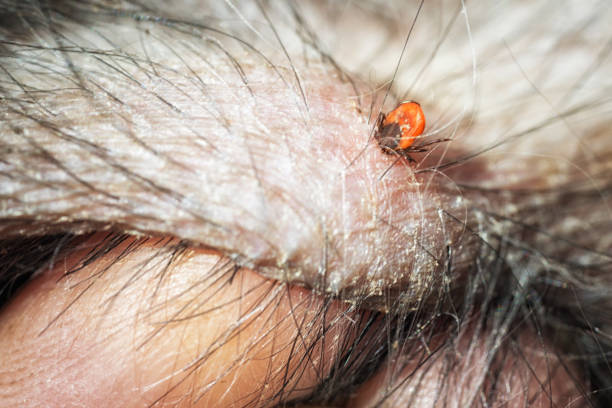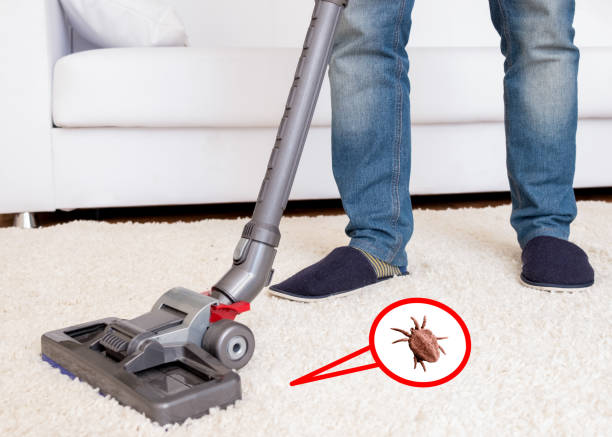If you’ve ever woken up with itchy, red rashes on your body and you would probably think you have been bitten by bed bugs. But there is something you may have missed. You may have chiggers in your bed.
Chiggers, also known as red bugs or berry bugs, as they are red in color and are known to feed on human skin.
Although they are more common in the outdoors, chiggers can make their way inside homes and hide in beds, carpets, and other areas. In this blog post, we will discuss everything you need to know about chiggers in bed – how to identify them, the difference between chiggers and bedbugs, and how to get rid of them.
What are chiggers?

Chiggers are the larvae of mites that belong to the Trombiculidae family. It is usually found in tall grassy areas and wooded areas, where it attaches itself to passing animals and humans. The bites of chiggers are itchy and uncomfortable, but they are not known to transmit diseases.
Chigger vs Bed bug
| Chigger | Bedbugs |
|---|---|
| Chiggers, also known as harvest mites, are tiny, red-colored mites that are typically found in grassy or wooded areas. | Bedbugs are small, flat, reddish-brown insects that feed on human blood and can be found in beds and other furniture. |
| Chigger bites are usually found around the waist, ankles, or other areas where clothing is tight, and often appear in groups or clusters. | Bedbug bites are typically found on exposed skin and are usually in a straight line or zigzag pattern. |
| Chigger bites can cause intense itching and discomfort. | bedbug bites may cause a variety of symptoms including itching, swelling, and even allergic reactions. |
What do chiggers look like? And how do they differ from a flea bite or scabies bite?
Chiggers are tiny, almost invisible to the naked eye, and are often red or orange in color. They are part of the arachnid family and are related to spiders, mites, and ticks. Chiggers have six legs and are about 0.15 to 0.3 millimeters in length, making them difficult to spot.
When they are in their larval stage, chiggers are the ones that bite humans, and they are typically found in grassy or wooded areas.
The larvae feed on human skin and as they grow, they drop off and become nymphs and adults.
They typically appear in groups or lines, and the itch can be very intense. Chigger bites are commonly found on areas of the body where the skin is thin, such as ankles, wrists, and armpits.
A flea bite tends to be small, raised, and itchy, while a bedbug bite tends to be larger and more painful. A scabies bite looks like a small blister and is extremely itchy.
How long can they live in a bed?
Chiggers cannot survive long periods indoors in a hot and dry climate, since they need a moist and humid environment to survive. They usually survive for a few days. However, if the temperature and humidity levels are suitable, they can survive for many weeks in bedding or furniture.
How to get rid of chiggers in your home?

It can be challenging to get rid of chiggers in your house because they are small and can hide in hard-to-reach places. However, there are a few proven ways you can do to eliminate them from your living space:
- Vacuuming: The most effective way to get rid of chiggers and their eggs is to vacuum your home, especially your carpets, upholstery, and bedding. After vacuuming, dispose of the vacuum bag immediately.
- Washing: Make sure all clothing, bedding, and linens are washed in hot water since chiggers cannot survive in hot water.
- Steam-cleaning: As a part of the deep cleaning process, consider steam cleaning the carpets and upholstery.
- Spraying: Use a pesticide specifically designed to kill mites, such as pyrethrin, to spray your home. Pyrethrin is a natural insecticide derived from Chrysanthemum flowers. Other options include permethrin, bifenthrin, and cyfluthrin, which are synthetic pesticides that are also effective against chiggers.
- Seal cracks and gaps: They can hide in your home and survive in cracks and gaps in the walls and doors. Seal these openings to prevent their entry.
- Remove debris: Clear any debris, such as leaves or brush, from around your home and garden area, as chiggers can hide in these spaces.
What are the treatments for chigger bites?
Chigger bites can be very uncomfortable and you may feel a lot of itching. Having said that they usually do not cause any serious health problems. There are some natural remedies that can help to alleviate the symptoms of chigger bites:
- Wash the affected area with soap and water to reduce the risk of infection.
- Apply an ice pack to the affected area to reduce itching and inflammation.
- Use an over-the-counter anti-itch cream or ointment, such as hydrocortisone, calamine lotion, or a baking soda paste to relieve itching.
- Take an oral antihistamine, such as diphenhydramine, if you have the uncontrollable urge to itch and swelling.
- As a precautionary measure, avoid scratching the affected area to prevent further irritation or infection.
If you notice an increase in pain, swelling, or redness around the bite area, you should see a doctor as soon as possible.

